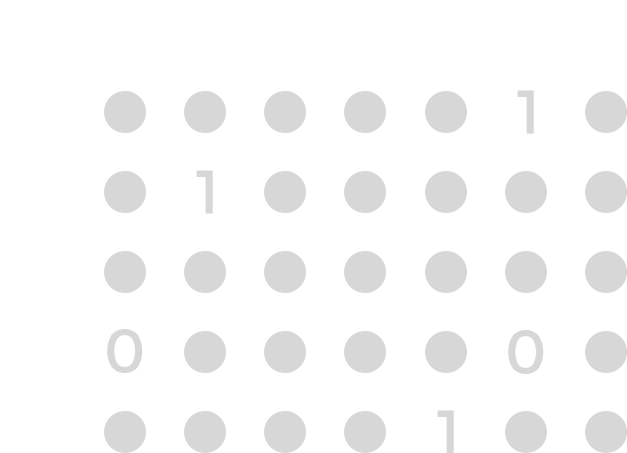
AAS Submodel Templates
Submodels (Teilmodelle) bilden den Inhalt der Asset Administration Shell. Sie beschreiben inhaltliche oder funktionale Aspekte eines Assets. Finden Sie hier die Übersicht der offiziellen IDTA Submodel-Templates.
IDTA TEILMODELLE
Registered AAS Submodel Templates
Jedes Submodel-Template, das den IDTA-Review durchläuft, erhält zur eindeutigen Zuordnung eine IDTA-Nummer. Folgende Nummernbereiche sind definiert:
- IDTA 01000 bis IDTA 01999 für Metamodelle
- IDTA 02000 bis IDTA 09999 für Submodel Templates
- “Extern” für extern veröffentlichte Submodel Templates
This Submodel template aims to define the dynamic data points of a Battery Passport conformant to DIN
DKE SPEC 99100 and the corresponding EU regulations.
The battery passport consists of the following 7 parts:
Digital Battery Passport – Part 1: Digital Nameplate (IDTA-02035-1)
Digital Battery Passport – Part 2: Handover Documentation (IDTA-02035-2)
Digital Battery Passport – Part 3: Product Carbon Footprint (IDTA-02035-3)
Digital Battery Passport – Part 4: Technical Data (IDTA-02035-4)
Digital Battery Passport – Part 5: Product Condition (IDTA-02035-5)
Digital Battery Passport – Part 6: Material Composition (IDTA-02035-6)
Digital Battery Passport – Part 7: Circularity (IDTA-02035-7)
This specification is Part 7: Circularity (IDTA_02035-7).
Jedes Submodel-Template, das den IDTA-Review durchläuft, erhält zur eindeutigen Zuordnung eine IDTA-Nummer. Folgende Nummernbereiche sind definiert:
- IDTA 01000 bis IDTA 01999 für Metamodelle
- IDTA 02000 bis IDTA 09999 für Submodel Templates
- “Extern” für extern veröffentlichte Submodel Templates
This Submodel template aims to define the dynamic data points of a Battery Passport conformant to DIN
DKE SPEC 99100 and the corresponding EU regulations.
The battery passport consists of the following 7 parts:
Digital Battery Passport – Part 1: Digital Nameplate (IDTA-02035-1)
Digital Battery Passport – Part 2: Handover Documentation (IDTA-02035-2)
Digital Battery Passport – Part 3: Product Carbon Footprint (IDTA-02035-3)
Digital Battery Passport – Part 4: Technical Data (IDTA-02035-4)
Digital Battery Passport – Part 5: Product Condition (IDTA-02035-5)
Digital Battery Passport – Part 6: Material Composition (IDTA-02035-6)
Digital Battery Passport – Part 7: Circularity (IDTA-02035-7)
This specification is Part 6: Material Composition (IDTA_02035-6).
Jedes Submodel-Template, das den IDTA-Review durchläuft, erhält zur eindeutigen Zuordnung eine IDTA-Nummer. Folgende Nummernbereiche sind definiert:
- IDTA 01000 bis IDTA 01999 für Metamodelle
- IDTA 02000 bis IDTA 09999 für Submodel Templates
- “Extern” für extern veröffentlichte Submodel Templates
This Submodel template aims to define the dynamic data points of a Battery Passport conformant to DIN
DKE SPEC 99100 and the corresponding EU regulations.
The battery passport consists of the following 7 parts:
Digital Battery Passport – Part 1: Digital Nameplate (IDTA-02035-1)
Digital Battery Passport – Part 2: Handover Documentation (IDTA-02035-2)
Digital Battery Passport – Part 3: Product Carbon Footprint (IDTA-02035-3)
Digital Battery Passport – Part 4: Technical Data (IDTA-02035-4)
Digital Battery Passport – Part 5: Product Condition (IDTA-02035-5)
Digital Battery Passport – Part 6: Material Composition (IDTA-02035-6)
Digital Battery Passport – Part 7: Circularity (IDTA-02035-7)
This specification is Part 5: Product Condition (IDTA_02035-5).
Jedes Submodel-Template, das den IDTA-Review durchläuft, erhält zur eindeutigen Zuordnung eine IDTA-Nummer. Folgende Nummernbereiche sind definiert:
- IDTA 01000 bis IDTA 01999 für Metamodelle
- IDTA 02000 bis IDTA 09999 für Submodel Templates
- “Extern” für extern veröffentlichte Submodel Templates
This Submodel template aims to define the dynamic data points of a Battery Passport conformant to DIN
DKE SPEC 99100 and the corresponding EU regulations.
The battery passport consists of the following 7 parts:
Digital Battery Passport – Part 1: Digital Nameplate (IDTA-02035-1)
Digital Battery Passport – Part 2: Handover Documentation (IDTA-02035-2)
Digital Battery Passport – Part 3: Product Carbon Footprint (IDTA-02035-3)
Digital Battery Passport – Part 4: Technical Data (IDTA-02035-4)
Digital Battery Passport – Part 5: Product Condition (IDTA-02035-5)
Digital Battery Passport – Part 6: Material Composition (IDTA-02035-6)
Digital Battery Passport – Part 7: Circularity (IDTA-02035-7)
This specification is Part 4: Technical Data (IDTA-02035-4).
Jedes Submodel-Template, das den IDTA-Review durchläuft, erhält zur eindeutigen Zuordnung eine IDTA-Nummer. Folgende Nummernbereiche sind definiert:
- IDTA 01000 bis IDTA 01999 für Metamodelle
- IDTA 02000 bis IDTA 09999 für Submodel Templates
- “Extern” für extern veröffentlichte Submodel Templates
This Submodel template aims to define the dynamic data points of a Battery Passport conformant to DIN
DKE SPEC 99100 and the corresponding EU regulations.
The battery passport consists of the following 7 parts:
Digital Battery Passport – Part 1: Digital Nameplate (IDTA-02035-1)
Digital Battery Passport – Part 2: Handover Documentation (IDTA-02035-2)
Digital Battery Passport – Part 3: Product Carbon Footprint (IDTA-02035-3)
Digital Battery Passport – Part 4: Technical Data (IDTA-02035-4)
Digital Battery Passport – Part 5: Product Condition (IDTA-02035-5)
Digital Battery Passport – Part 6: Material Composition (IDTA-02035-6)
Digital Battery Passport – Part 7: Circularity (IDTA-02035-7)
This specification is Part 3: Product Carbon Footprint 1.0 (IDTA-02035-3).

